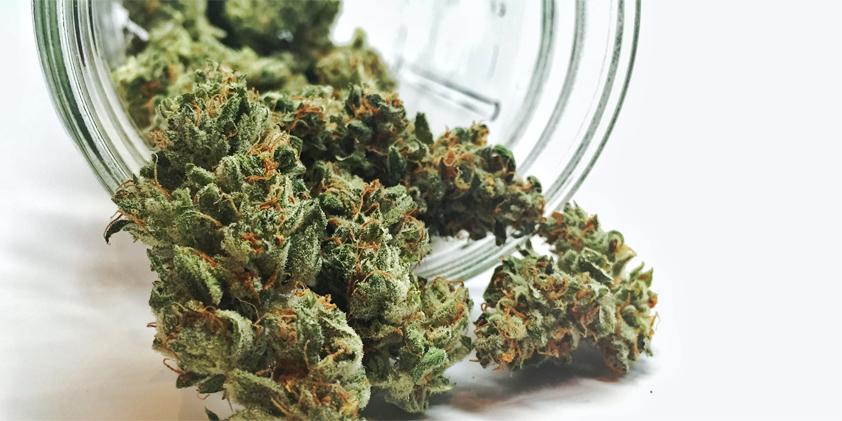Growing quality bud is both a science and an art and can take years to master. That said, there are a few key factors that can influence your garden and make or break the yield of your grow – and the quality. Check out these 10 tips to grow high quality bud to help get you started off in the right direction!
Source Quality Seeds
The first step to producing quality bud is to start with high-quality seeds (or clones). It is a good idea to ask around in your area to determine who provides the best quality seeds and clones that you could start with to boost success.
Choose The Right Container Size
Once you have your seed or clone, you need to ensure that it is being planted in a proper container for its size. Of course, if it is a seed or seedling it won’t require much space at first. Once you are ready to transplant that seed into a larger container, it is a good idea to choose something mid-range (3 gallon). A container that is too large can become efficient and result in extra nutrients being left in the soil. The opposite issue can occur with a container that is too small, as it will limit the plants ability to fully develop
Allow For Proper Airflow and Spacing
Providing proper spacing between your cannabis plants is vital to ensure that they get enough airflow and can reach their full growth potential, without being hindered by nearby plants. Proper spacing can also ensure that enough light reaches your plants. Consider low-stress training methods to further enhance growth by manipulating your plant structure to grow wider as well as tall.
Manage Temperature and Humidity
One of the most important aspects of a cannabis garden is maintaining proper temperature and humidity within your grow room. Depending on the stage of your plant, different temperatures and humidity are required, which is why it is best to start a grow room all at once with plants of similar growth cycles to ensure the environment is sufficient for each plant.
For instance, seedlings do best at temperatures of 65-75°F with 60-70% humidity during the first two weeks. Once the plant reaches the vegetative state and has leaves, you can lower the humidity by 5% each week until the plant begins to flower (4 weeks). When the plants begin flowering, humidity is best kept at 40-50%. The temperature can be kept between 68 and 77°F during these stages with the higher end temperature during the vegetative state and dropping to the lower end during flowering and harvest. The humidity should also be lowered slightly to 30-40% about a week or two before harvest!
Don’t Forget CO2
If you are growing outdoors, your plants will get plenty of CO2. However, indoor growers need to be aware of the CO2 levels as it plays a vital role in how efficiently and successfully the plants can absorb light and convert it into useable energy.
Invest in Proper Lighting
Speaking of lighting, this is one of the most important aspects of growing (aside from temperature and nutrition) and plays an important role in both the size and speed of your grow, but also in the quality of the final harvest. Insufficient lighting will often result in low yields and poor quality bud. Common household light bulbs are not sufficient for cannabis plants, which thrive under LED and HID lighting in particular. If choosing LED, opt for full-spectrum grow lights as the wavelength can be adjusted to suit the needs of various grow cycles. These lights also have high efficiency and are low cost to run.
Maintain Appropriate Nutrition
Nutrition is key to yielding dense, quality buds but there is a science to ensuring that your plant is getting the right nutrients during particular phases of growth. For instance, seedlings require more phosphorus than vegetative state plants as this is an essential nutrient for photosynthesis. When plants reach the vegetative stage, they benefit more from nitrogen, which regulates production of proteins to improve plant size and vigor. When the plant reaches the flowering stage, it is once again ready for higher levels of phosphorus to improve resin production. Another primary nutrient is potassium, which assists with converting light and air to useable energy as well as for resisting bacteria and mold. This is important to supply during all growth stages.

Provide Support
Depending on the strain you have chosen, you may need to supply your plant with additional support. Not all strains are designed to hold the weight of the dense buds you are trying to achieve, so supporting them with a stake or netting can do wonders for reducing their stress and improving quality.
Prune Your Plants
In order to produce the greatest yields of top-quality buds, you must prune your plants regularly. There are various methods for doing so such as low-stress training, mainlining, super cropping, topping, FIMing, defoliation, Sea of Green, and more! Each grower needs to determine which pruning and training method works best for them as these methods require consistency to be successful
Time Your Harvest
Harvesting at the right time is crucial to getting the most reinous and potent buds. New growers are often over-excited and tend to harvest as soon as they see the buds fattening up, but there is an optimal time to harvest depending on the strain and the desired effects. The key to harvesting is to look at the trichomes! Sativa crops are best harvested when most of the trichomes are cloudy, however when the trichomes are mostly amber it signals bud with potent Indica effects. There is also the option of harvesting when half the trichomes are cloudy and half are amber, this tends to produce bud with a near-even split of Sativa and Indica effects.
Are You Harvest Ready?
Another key factor of producing quality bud, is to ensure that care is taken through to harvesting, trimming and the dry and cure process so as to not damage the hard work you have done. Using a quality home trimming system such as the Tabletop Pro or Mini bud trimmer machine can go a long way to ensuring your top quality buds are as aesthetically pleasing and ready to smoke as possible!



